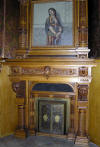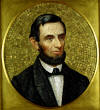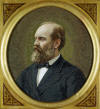General Józef Wybicki
Junior High School
Number 24 in Lodz

European citizens in my city,
the citizens of my city in Europe.
Liceo Scientifico "Pitagora" Rende, Italy

art and culture / sportsmen / writers and poets / musicians / scientists / businessmen / others /
OTHER NATIONALITIES
- Jan Petersilge
- Antonio Salviati
Antonio Salviati born March 18, 1816, Vicenza, died January 25, 1890, Venice.
He was an Italian glass manufacturer.
Salviati was a lawyer who got interested in glasswork after becoming involved in restorations being done on the mosaics of Saint Mark's Cathedral in Venice. He opened his first glass business in 1859 with Lorenzo Radi, and this firm produced the mosaic glass for the altar screen for the high altar of Westminster Abbey. In 1876, he left this business to establish a new firm.
Murano had been a center of fine glasswork since the Middle Ages, but the pieces were lavish and expensive specialty pieces that only the wealthy could afford. Salviati changed the face of the business by becoming the first glass factory owner to employ a large number of skilled workers to mass produce glass intended for export. This reestablished Murano as a centre of glass manufacturing.
The firm’s mosaic work occupies important architectural spaces in St. Paul’s Cathedral, the Houses of Parliament, and Westminster Abbey in London, and in the Albert Memorial Chapel at Windsor Castle in England. In the United States, the Stanford Memorial Church at Stanford University in California is decorated with massive Salviati mosaics. The exterior of the north facade depicts Christ Welcoming the Righteous into the Kingdom of God; when completed in 1901 it was the largest mosaic in America. The devastating 1906 San Francisco earthquake destroyed this priceless work, but it was recreated from the original drawings, preserved in Italy, several years later.
Antonio
Salviati made also the mosaic on the dome of I. K. Poznanski's Mausoleum
at the Jewish Cemetery in Lodz - the biggest Jewish tomb in the world.
He used 2 million coloured gold-plated flakes.
The facade mosaic on Julius Kindermann Villa at 137/139
Piotrkowska Street in Lodz is also made by firm of Antonio Salviati.
Salviati’s company continues today to produce glass art of the highest
quality.




